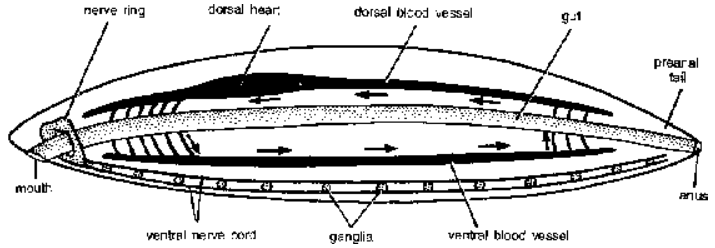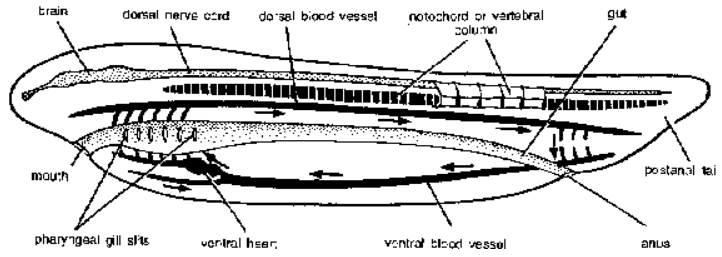
Protostomes And Deuterostomes
Classification of Animals Non Chordates of Class 11
Protostomes And Deuterostomes
1. Protostomes – In protostomes mouth develops from blastopore. E.g. Annelida, Arthropoda, Mollusca.
2. Deuterostomes – The mouth never develops from the blastopore, although the blastopore may give rise to the anus. E.g. Echinoderms and Chordata.
Table: Non-chordates And Chordates
Non-chordates Chordates
1. Radially, bilaterally symmetrical Bilaterally symmetrical or Asymmetrical
2. Diploblastic or Triploblastic Triploblastic
3. Acoelomate, Pseudocoelomate or Eucoelomate Eucoelomate
4. Notochord – absent Notochord – present
5. Pharyngeal gill-slits – absent Pharyngeal gill-slits present at some stage of life.
6. Ventral nerve cord – present Dorsal tubular nervous system present

Fig. Generalised invertebrate organisation (diagrammatic)

Fig. Generalised vertebrate organisation (diagrammatic)
